4.00 Randox Grand National Handicap Chase 4m 2f 74yds
Lottery would be regarded by many as a rather aptly named winner of the first official running of the Grand National in 1839.
Racing has always been laden with cliches and the widely held view that the Aintree spectacle is an almost random event, governed by lots of luck, can easily be dispelled by empirical evidence.
Lottery, ironically enough, was a well-supported 5-1 favourite of that inaugural National, and the market has been a good guide to finding winners of the race in the intervening years.
The paragraphs above are italicised for a reason. They're copied and pasted from my 2014 preview of the great race. In an age of automation and artificial intelligence, I’m not inclined to paraphrase or type them out a second time.
The runners and riders change over the years, but certain trends – and fallacies – remain.
You don’t need good luck to win a National, you just need to avoid bad luck. They’re two different things.
Favourites and second favourites have had a terrific record in this contest, although more so over the last 30 years, rather than in the entire history of the National.
Modifications made to the fences on safety grounds in recent years means this isn’t the jumping test it once was and younger horses with less experience have been performing better than they did historically.
The ability to stay this unique marathon distance is still the most important factor to consider. The alterations to the jumps have arguably turned this into more of a stamina test, with the field taking in the first few fences at a faster pace. Horses fall for a variety of reasons, but one of the main reasons is fatigue, which impacts technique, and that explains why a runner is more likely to fall over the last two fences than over the first two fences in a race. The tired horse that once would have been caught out by an obstacle in the latter stages of this race is now more likely to be pulled up as its stamina gives way.
Winning form over a minimum of three miles is almost always a prerequisite here, and ideally the horse will have displayed winning or placed form over further.
Most of the runners will have had this race as their main target all season, so it can be wise to disregard early season form where their connections may have been protecting their handicap marks and instead concentrate on their performances in previous seasons and any runs they’ve had since the weights for the race were released on 20 February. A run earlier in the season over hurdles has been one method trainers have deployed to bring their charges to peak fitness without endangering their handicap marks.
Winning form over fences is obviously a boon, but history suggests you should be wary of backing runners with more than three lifetime handicap chase victories to their names and/or more than one win in their last five starts, as they may have shown their hands a little too early and be exposed. Those horses 'well-in’ or ahead of the handicapper have a far easier task.
In terms of the number of outings in the current campaign, horses with at least three runs and no more than seven starts have performed best. Their most recent start should have come since the turn of the year and ideally in February or March. The cancellation of the cross-country race at Cheltenham this year, where a number of the field were engaged, may or may not skew this trend.
The handicap has been compressed in recent years to give the classier horses a better opportunity of scoring, but Many Clouds in 2015 (11st 9lbs) remains the only horse to carry more than 11st 7lbs to victory since the legendary Red Rum (11st 8lbs) in his historic third win in 1977, when it was an admittedly very different contest.
With AI making giant strides and this being a trends race, I turned to ChatGPT and Gemini to see if either could write a Grand National preview for me. That proved a fruitless exercise.
Neither chatbot has access to proprietary databases or interactive form guides.
Even if they did, I guess predicting the outcome of a horse race could be viewed as part science and part art, and there are important variables that can’t be accounted for as the data doesn’t exist or we don’t have access to it.
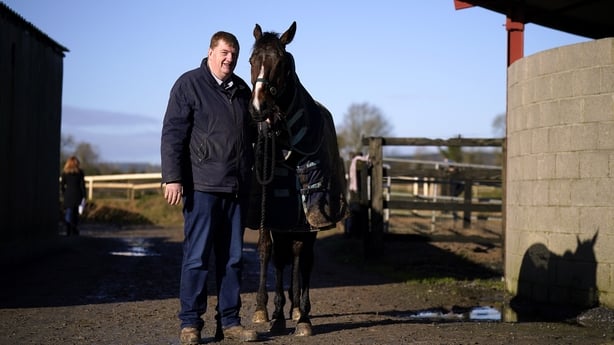
The original top-weight in the race was Shark Hanlon’s Hewick, the fairytale horse bought for just €850. They do say ‘handsome is as handsome does’, but a glimpse of him gives you some idea why he was sold for such a paltry sum. He’s a fairly unimpressive physical specimen and lacks size and scope. It’s hyperbolic to suggest that his more physically imposing trainer would give you a better spin around the National course – giving ‘jumping the shark’ an entirely new meaning – but Hewick certainly isn’t built for it. Not for the first time, his underrated trainer has put the horse first and he was scratched from the race, with the prospect of humping a big weight on unsuitably soft ground clearly unsuitable.
Why write a paragraph on a horse that doesn’t even line up, you ask.
Having to carry a heavy weight in the National is deemed a significant negative, but it assumes all horses’ ability to carry weight is the same, which it clearly isn’t it.
We’ll indulge in the absurd for a moment. Let’s say you enjoy going out for a 7K (just in excess of the National distance) run of an evening with your significant other. We’ll return to the imperial system as this is a racing analogy. You’re a 12 stone, 5’11’’ male (you tell people you're six foot, obviously) and you're heading out on this gallop with your 10 stone, 5’9’’ running mate, who is your equal over the distance on all previous form. You’re both perfectly matched. As you prepare to embark on the run, strap a man/woman on her back (go on, tell her it’s in the interest of science). When you’re quite finished guffawing, you will apply a human of the same weight to your own shoulders. You’re both going to have a bad time. However, despite being evenly matched in ability, you’ll fare much better as the more robust model. The analogy is a rather frivolous one. Racehorses weigh in excess of 1,000lbs. But you get the picture.
Unfortunately for us, and anyone out there in the world of coding and AI, the weights of individual racehorses aren’t recorded and published in this part of the world. You’ll have to go to Hong Kong for that information.
In the interests of transparency and figuring out the form on display, there’s another major negative in not having access to the weights of the runners. Fully mature horses do have an optimal range in terms of their racing weight. The winner of this race could well have shown dismal form earlier in the season when it simply wasn’t fit. Access to a horse’s racing weight would help confirm such an explanation.
After all that preamble, my own original shortlist for this year’s race is arguably a little underwhelming, in that it included five runners in a field of 34 all well-found in the market, namely Corach Rambler, Vanillier, I Am Maximus, Panda Boy and Mr Incredible. At bigger prices, I liked Gaila Des Liteaux.
Corach Rambler and Vanillier obviously filled the first two places in last year’s race, but I think they were vastly superior to their fellow finishers, despite neither receiving the greatest of rides.
How can you criticise a jockey for finishing first or second in a National?
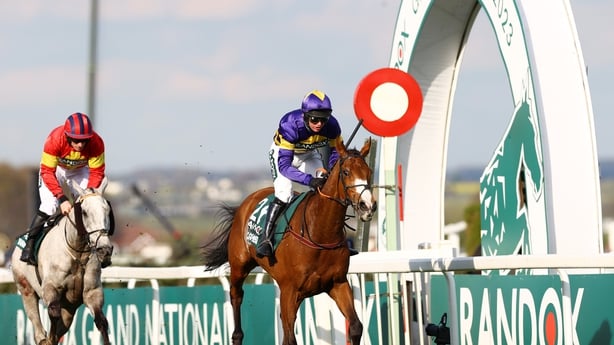
Derek Fox has given Corach Rambler a number of outstanding rides. His winning efforts in the Ultima at the Cheltenham Festival in 2022 and 2023 were masterful, even if his mount was well-in, while their third in this year’s Gold Cup featured another fine effort from the saddle. Corach Rambler is not an easy ride. He needs to be smuggled into a race and idles when he hits the front, sticking his head up in the air and looking rather ungainly. Corach Rambler was travelling all over his rivals approaching the final fence in last year’s race and his rider didn’t need to reach for his whip until reaching the Elbow, but he was in the lead too soon. If he’s in contention in this year’s race, I’m anticipating a more patient ride. Lucinda Russell’s charge was clearly unfit in his runs in defeat earlier in the campaign and there was nothing not to like about his Gold Cup effort. Some have flagged that he’d a hard race at the Festival, but he’s had 29 days to recover and that should not be offered as an excuse if he underperforms here.
If Fox delivered his challenge a little prematurely in last year’s race, Sean Flanagan’s ride on Vanillier was at the opposite end of the tactical spectrum. Vanillier finished like a train, but it’s hard not to conclude that he’d have given the winner a proper race if Flanagan hadn’t overindulged in exaggerated hold-up tactics. Vanillier was sent off an unfancied 50-1 on his first three starts of the current campaign over inadequate trips and ran according to market expectations. There were definite signs of life in his most recent outing, but there was still 14 lengths between Gavin Cromwell’s runner and I Am Maximus in the BobbyJo at Fairyhouse. Vanillier looked a little rotund that day and Cromwell probably left plenty to work with, however, he’d ideally have finished a little closer to the winner.
I Am Maximus appears to be the Willie Mullins first string, although that’s not alway an indicator of the final placings. We don’t know if last year’s Irish Grand National winner will stay the extra distance, but his finishing effort at Fairyhouse suggests it’s probable. Paul Townend’s mount is one of the first horses you’d put a line through over the old National fences at Aintree as he’s a really sketchy jumper. However, he’s somehow managed to clamber over obstacles in his races thus far without falling or unseating his rider. If he has a lengthy career, a fall or an unseat is definitely coming, I just think and hope that it won’t come here. Ideally, he’d carry a little less weight than 11st 6lbs, but he’s arguably well-handicapped on his Fairyhouse run, which came after the weights were published. The current terrain should suit, but drying ground on Saturday would be a minor concern.

In terms of the numbers of inmates in his yard, Martin Brassil is one of the smaller handlers contesting the race. However, he can be regarded as a boutique trainer of staying chasers, which is exactly what we’re looking for, and he’s previously captured this race and the Irish edition of it with Numbersixvalverde. Brassil saddles Panda Boy here and he looks to have really strong claims if he stays. He’s racing off a lovely weight of 10st 7lbs and finished fifth in last year’s Irish National. A literal interpretation of that Fairyhouse run suggests he might not stay. However, there are two factors I’d offer in mitigation. Firstly, he pecked on landing at the penultimate fence and lost momentum. Secondly, I’m wondering if he could have been a little fitter than he was for the task he faced. Panda Boy prepped for the Irish National at Leopardstown over an inadequate trip but reached only the fifth fence before suffering a fall. He’s a big horse, possibly one that is difficult to get fit at home. Falling early in that Leopardstown assignment wasn’t the optimal prep ahead of his first run in a marathon. He’s shaped as a dour stayer in his races this year, with his last run coming over hurdles at the beginning of February, presumably to protect his handicap mark.
Mr Incredible has officially ‘raced’ only 11 times in his life under Rules, but one of those contests saw him refuse to take part as he planted himself at the start line. He’s talented but quirky, and his shrewd connections realised at the outset of his career that chasing was always going to be his metier. The son of Westerner never contested a bumper and raced just twice over hurdles. Bad luck befell the mount of Brian Hayes in last year’s National when he unseated at the Canal Turn on the second circuit after the saddle slipped. After a lengthy absence, his only appearance this season saw him finish second in the Midlands National in typically gruelling conditions at Uttoxeter. Despite his idiosyncrasies – or perhaps because of them – there’s not much I don’t like about Mr Incredible. However, the one huge negative has to be his lack of match practice this season. Will he have the underlying fitness foundation to do his undoubted level of natural ability justice? If he’d had the typical three to seven runs earlier in the season, this wouldn’t be a concern. He could win the race or he could tire badly in the latter stages if he’s found wanting for fitness rather than stamina. The latter looks assured.
Galia Des Liteaux represents the Skeltons, who presumably have Irish blood, as they are proving adept at getting horses well-handicapped. Soft ground and left-handed tracks seem to bring out the best in this mare. Her last effort at Exeter was a poor one and you’d need to forgive her that run if supporting her here. However, that course probably wasn’t to her liking.
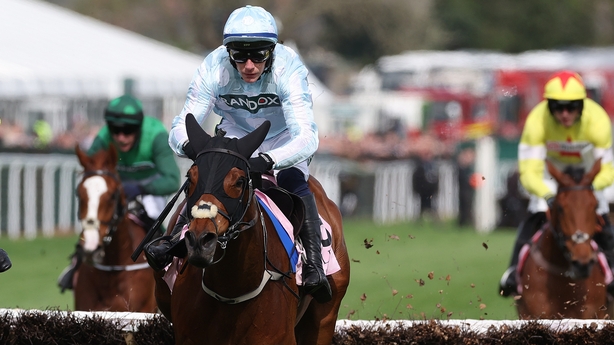
Just like Mr Incredible, Meetingofthewaters is another Willie Mullins-trained runner who will likely run really well or really badly, and not in between. He wears a hood and he wears it for a reason. Bizarre to look at, this particular piece of headgear is not unlike what you might find a patron sporting at a BDSM club. Deploying this particular accoutrement is designed to make horse less recalcitrant and more amenable to restraint. Meetingofthewaters can run quite keenly in his races and could well be dropped out in the early stages of the race. He has a confident pilot on his back in Danny Mullins, who has a successful blueprint on how to ride the horse, having scored on him in the Paddy Power at Christmas. If he settles, he could run a huge race, but he could equally pull his chance away early on.
Mahler Mission is a horse prominent in the betting that I’m against, simply due to the fact that he’s been off the track since the beginning of December. His absence is admittedly by design, with John McConnell making the call not to give him a hard race on winter ground and instead come here fresh. It’s not how I’d choose to prepare a National runner, which is obviously of little relevance. What is germane is that this has not been a successful strategy in the history of the race. Trainers are creatures of habit and they tend to ape their peers who know how to pull off big-races wins. If heading to the National on the back of a 133-day break was a ploy which led to victory, they’d all be at it. Perhaps McConnell’s modus operandi will pay off, but I’d have preferred to have seen him in the interim in any type of race. Decent ground can be found in the UK in January and February if you look hard enough, and there’s alway the option of running on the all-weather, even if it would be regarded as an unorthodox prep for Aintree.
Kitty’s Light has the profile of a spring horse, in that he peaks at this time of year, but does he need spring ground? He might not require good ground to win a National, but genuinely soft ground is a concern unless it dries out before the tape goes up.
The mare Limerick Lace has been heavily punted since the final declarations were revealed on Thursday morning. The Gavin Cromwell-JP McManus axis has to be feared when the money is down, but if you’re not already, you’ve missed all the fancy prices. At the time of writing, only Corach Rambler and I Am Maximus are ahead of Mark Walsh’s mount in the betting. Her best form is over two and a half miles, however, she’s only tackled three miles once and never raced over further. That one race at three miles saw her finish an excellent second to Coko Beach in the Troytown at Navan in November. The daughter of Walk In The Park comes here at peak fitness after a good second at the Cheltenham Festival and stays three miles well, but will she stay a trip in excess of four miles, and are you being priced in to find out at her current odds? I’d argue that you’re probably not.
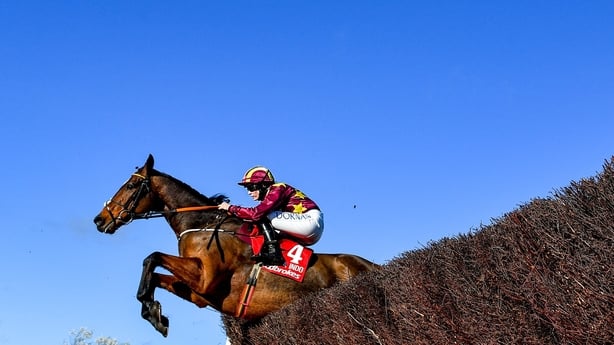
As a previous Gold Cup winner, Minella Indo has to be regarded as the class horse in the field. He displayed plenty of stamina to win at Cheltenham in 2021 before being hopelessly outpaced by A Plus Tard in his defence a year later, where he still managed to fill the runner-up berth, albeit 15 lengths behind his victorious stablemate. The 2022 race was a test of speed, not stamina, so it’s a positive that he was outpaced. If you’re attempting to win the National with a previous Gold Cup winner, you’re obviously only going to do so with one who has stamina as his forte. He has genuine claims. The negative here, from a betting perspective, is that Rachael Blackmore rides. Yes, that Rachael Blackmore, the one who has won many of the biggest races in the calendar – including this one – and who is one of best riders in the weighing room, regularly beating her elite male colleagues. There was a time, in the not too distant past, where you could profit backing the mounts of female jockeys blindly, such was the chauvinism the riders face. Those days are well and truly gone. Blackmore has a name recognition that none of her current colleagues enjoy. There is no ‘Ruby’ or ‘AP/McCoy’ contesting this race. If you stopped 100 randomers on the street in London/Leeds/Liverpool and asked them to name a current jump jockey, Blackmore is topping that poll by a distance. We’re constantly reminded that this is the public’s race, one where the infrequent gambler plays a major role in shaping the betting market. In the public’s race, Blackmore is the public’s jockey, which means her mounts are unlikely to offer value. If you’re in Scotland, the public horse is likely Corach Rambler. Outside of that, Minella Indo is going to attract an undue amount of action. We can see that already. When the betting opened on the race after final decs, Minella Indo was matched at 34 (33-1) on Betfair. He’s now being backed at 21 (20-1) and is obviously considerably shorter with traditional bookmakers. There’s nothing to say the public horse can’t win the National, and Minella Indo could, but backing such horses in the long term is a bad idea, unless you think Minella Indo’s chances exceed 4.76%, which is what 21 implies.
Noble Yeats will probably run another good race, but I don’t see him shouldering 11st 12lbs to victory. The other runners carrying 11st 8lbs or more are Nassalam, Coko Beach and Capodanno. It’ll take a Herculean effort for any of the trio to threaten the judge.
Stattler looks as if he's been laid out for the race, but would prefer better ground over this energy-sapping distance.
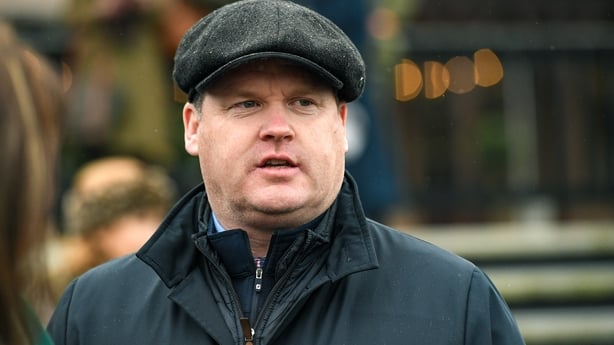
Gordon Elliott is responsible for eight of the runners in the field. As a subgroup within the race, I expect one or two of the Cullentra House octet to overperform, and six or seven to underperform. Fielding so many runners does look like a ploy to keep more competitive runners out of the race and Elliott has been castigated for it, unfairly in my view. Senior figures within British racing have floated the idea of limiting the number of horses a trainer can enter in the race, but there’s no need to adopt such a protectionist measure. The BHA could simply make qualifying for the race more onerous with minor rule tweaks. It’s not even a day’s work to implement such rules, it’s a morning’s work. Instead, there’s the possibility that British racing’s governing body could raise the white flag and pursue a needlessly draconian course of action, tacitly admitting that it’s been outwitted by one Irish trainer. Bizarre stuff. I’ve no idea which of the Elliott octet – do the doyens of the Jockey Club and the BHA refer to them as the Hateful Eight? – will perform best. The two I don’t like are The Goffer, who shapes like a non-stayer, and Chemical Energy. The latter is likely a very good horse, but one who has a mammoth 206-day break to overcome and one who would likely prefer a sounder surface. If Elliott does claim a fourth win in the race, it’s likely that will come via Coko Beach, Galvin or Delta Work. The trainer has publicly stated that the latter is his best chance. Pre-race quotes are much like pre-match quotes in other sports, ie largely meaningless. They serve as PR soundbites to promote the event and provide filler and content on slow news days. When the race has been run, go back and read the pre-race quotes from connections of the winner. It’s likely they flagged the chances of their 2024 Grand National hero. Then check the pre-race quotes from all the beaten runners. They’ll be much the same. Post-race quotes are arguably a little more illuminating, occasionally, as despair or euphoria can prompt people to say all sorts of things.
Three others in the line-up that caught my eye for various reasons are Foxy Jacks, Adamantly Chosen and Ain’t That A Shame.
Foxy Jacks is arguably the worst-handicapped horse in the race and is far from an easy ride. He seems a nervy type, who doesn’t like to be crowded. That’s an issue here. However, if he’s still in the race when the field has thinned out after two miles, he could run quite well as he looks built for the distance, even if there’s much for him to overcome.

I backed Adamantly Chosen for the National after he won at Down Royal last time out as I was taken with his performance, but then I opted to lay the bet back. Why the cold feet? It was his first win over a trip of three miles or more, but it came in a race that developed into a comparative sprint. We’re totally in the dark as to whether or not Adamantly Chosen stays three and a half miles, let alone this distance. He’s probably very well-handicapped and has bounced back to form. He’s likely to travel well until three miles into the race, after that, his fortunes are uncertain. I’m guessing he won’t stay.
Ain’t That A Shame has been purchased for the race by property magnate and amateur jockey David Maxwell. It’s easy to understand why Maxwell has made the acquisition. He’s a really strong traveller, who takes his rider into the race without any assistance from the saddle. Ain’t That A Shame is probably a three-miler. He’s definitely a horse with a preference for plenty of cut in the ground, which he didn’t get last year. I can see Ain’t That A Shame, despite his odds, looking the winner if he’s still standing around three miles into the race, but he’ll likely fade badly late on and he doesn’t have a jockey on board capable of rousing him along with purpose. Ain’t That A Shame will need to be the best horse in the race by far to cause an upset.
Eleven of the field trade at 100 or bigger on Betfair. There are faint glimmers of encouragement to take from the profiles of Eklat De Rire, Glengouly and Farouk d’Alene.
A final word on those horses who missed their intended preps at Cheltenham when the cross-country was cancelled due to waterlogging, namely Minella Indo, Galvin, Delta Work, Coko Beach, Foxy Jacks and Stattler. They were all ready to run at the Festival and are presumably ready to run on Saturday afternoon. However, missing that contest can’t be regarded as a positive, you can regard it as a neutral or negative only.
Verdict
Panda Boy and I AM MAXIMUS are the two I want to be with (even if the horse I like best on Saturday is Battle Born Lad in the 5.05 at Newcastle), but they're both prominent in the market.
Where you place your bets and how you place your bets is up to you, but if you’re supporting either of these runners, I’d recommend backing them on Betfair in the win market and in the place market which pays just four places. Most traditional bookmakers are paying six places in the race as a concession, but that concession means they’re betting to a huge overround, or margin, on the race. The back side on Betfair will have a percentage of just under 104%, while the lay side will come in under 100%.
This could be a race with very few finishers. Panda Boy and I Am Maximus could easily come a cropper, particularly the latter with his jumping deficiencies. If they make it around, I’m hoping they can make it into the top four places and I’m willing to risk forgoing two bonus places for better odds. It’s possibly what Daniel Kahneman, who died last month, would recommend if he was around and betting in the race. The renowned psychologist, with particular expertise in behavioural economics, recognised that the pain of losing X amount is greater than the joy derived from gaining that same sum for most human beings, even if that's irrational. There is arguably greater expected utility from adopting a bolder approach here, rather than playing it safe and obtaining shorter prices with the safety net of six places. I Am Maximus should be available to back at 10 (9-1) on Betfair, while trading at a best price of 8.5 (15-2) with bookmakers. Panda Boy is a 13.5 to 14 (12.5-1 to 13-1) chance on the exchange, but no bigger than 11-1 with bookmakers. There are obviously other betting exchanges available, but I’ve cited Betfair as it’s the exchange with the highest level of trade and greatest liquidity.
In these paternalistic times it would be remiss of me not to stress that you should only ever bet what you can afford to lose, and ideally a good deal less than that. The Grand National can definitely be viewed as something akin to a gateway drug that introduces huge swathes of people to gambling for the first time. If opening that potential Pandora’s box concerns you, don’t have a bet. Or do, and don’t watch the race. Go online afterwards and find out the result, then watch the replay. There’s a reason bookmakers spend millions on live streaming rights. It’s not for the good of their health. It’s a strategy implemented to act to the detriment of your wealth. If you don’t watch the race, there’s no dopamine rush. And without that, hopefully no future gambling problem.
Recommended
I Am Maximus (1 point win, 0.5 point place)
Panda Boy (1 point win, 1 point place)
Predicted 1-2-3-4
1 I Am Maximus
2 Panda Boy
3 Corach Rambler
4 Mr Incredible

